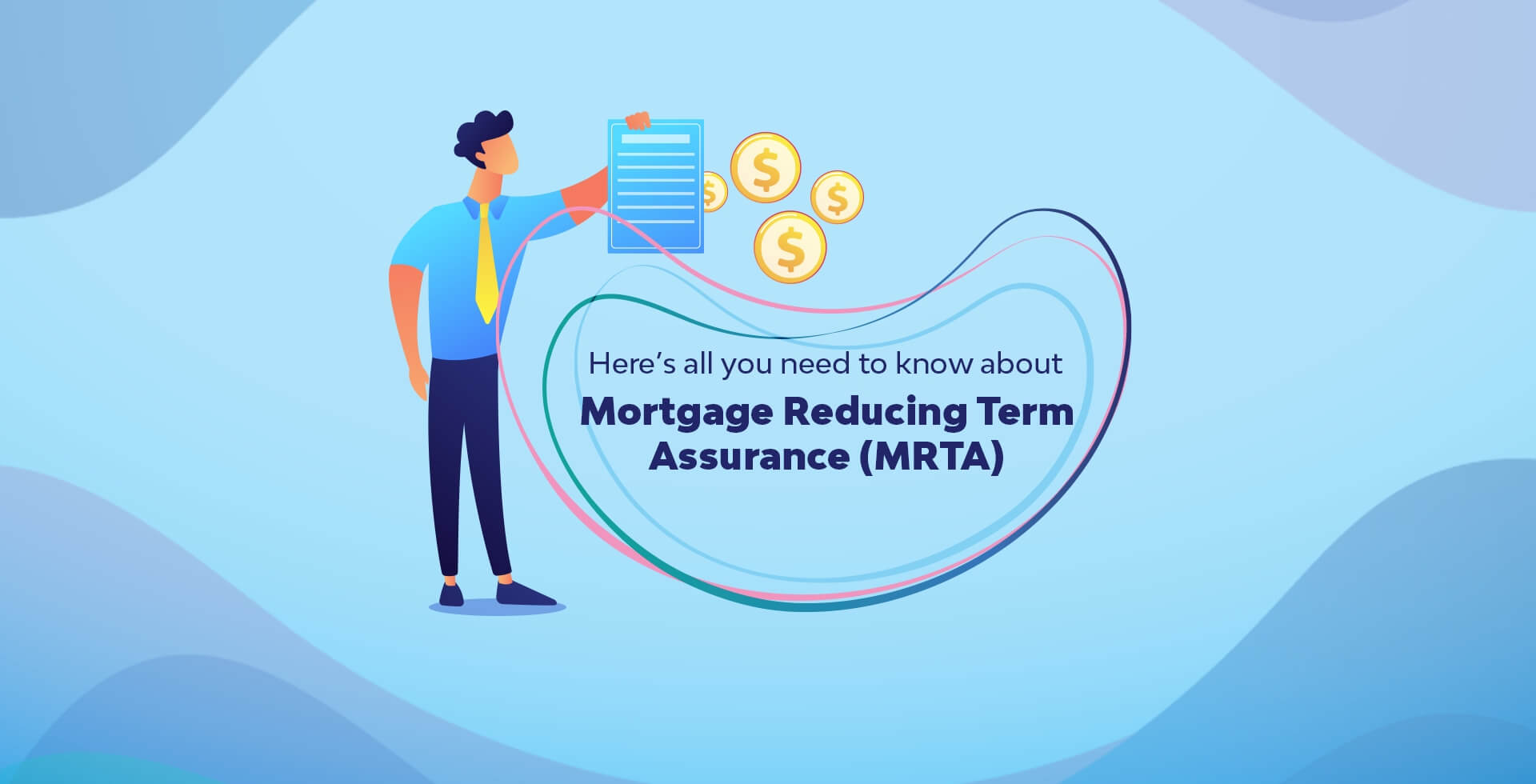
Mortgage Reducing Term Assurance (MRTA)
Purchasings a home is still one of the most desirable investments you can have. However, it can also be one of the costliest should anything happen to you. Fret not, it’s always good to plan ahead as there are insurance plans designed to help mitigate such events. In this article, we’ll be talking about some life insurance-type loans including the MRTA to consider after purchasing your home.

What is MRTA and what does it cover?
The Mortgage Reducing Term Assurance, more known as the MRTA, is a form of insurance plan and is considered the most popular option due to its budget-friendly premium during the home loan application at the bank. However, the sum insured by the plan decreases overtime. It settles the mortgager’s outstanding home loan to the bank should tragedy strike, either death or a total permanent disability (TPD).

Why do I need MRTA insurance?
While it is not compulsory to take up a MRTA insurance loan, some banks may insist that the mortgager take up a form of insurance to cover the value of the loan. Options may include the MRTA or life insurance and more. Many opt for MRTA as part of their home loan.

How much does MRTA cost?
Like many insurance policies, the MRTA is tailored to the mortgager’s age, gender, amount of the insured loan, the duration of the mortgage and so on. A medical check-up may be required and depending on its results, the insurance company may either increase its premium or reject the mortgager’s MRTA application.
The MRTA has to be paid upfront. Most people include this amount to their mortgage value as most banks offer lower interest rates on the mortgager’s home loans. They can also opt to purchase this later on, but the MRTA payable will be higher, and would need to have enough funds to settle it in one go.

Is MRTA refundable?
MRTA is not refundable to the mortgager nor to his/her dependents. Instead, the bank is considered its beneficiary. The MRTA is specifically designed to pay out the loan to the bank in an event where the mortgager is no longer capable of paying it (caused by death or a total permanent disability). This will also ensure that the dependents (if any) of the mortgager are not financially burdened with the loan, so it can be a form of insurance plan but without cash pay outs to them.

What are the alternatives for MRTA?
Apart from MRTA, there are alternative insurance plans for your property loan offered in the market.
• Mortgage Level Term Assurance or MLTA is slightly different from MRTA as it offers additional protection and savings for someone who is seeking for an alternative insurance plan. It is paid periodically depending on the terms and conditions with the mortgager’s insurance broker. Due to its offerings, MLTA is priced higher compared to MRTA, so mortgagers usually opt for this option when they are the sole breadwinner for his/her family as a form of life insurance.
If the mortgager is unable to pay due to death or a total permanent disability, the insurance company will settle the outstanding loan to the bank and the mortgagers’ dependents will receive the difference between the insured amount and the outstanding loan amount.
• Mortgage Reducing Term Takaful or MRTT is a product by Takaful. Similar to the MRTA, it is designed to offset your remaining home loan amount in the event of your death or total permanent disability.
• Mortgage Level Term Takaful or MLTT is another life insurance plan which also protects the mortgager and his/her dependents from financial burden. Compared to MRTT, the sum insured under MLTT stays the same throughout the period, hence the term, ‘level’. If the mortgager passes away or experience a TPD, the insurance company will pay out the agreed sum to the mortgager’s beneficiaries. They then become responsible in paying the home loan with the bank either through one lump sum payment or in instalments. The beneficiaries can keep the remaining sum if there is any surplus once the full payment is made. This is Takaful’s version of the MLTA.
• A life insurance can also be used to provide cover for the home loan. The amount normally taken at the time of purchasing the house needs to cover the loan. If the mortgager passes away or is physically unable to pay, the insurance will be used to settle the outstanding loan amount with the balance given to the mortgager’s dependents.

These are some life insurance-types you should look out for when buying your dream home. We recommend doing plenty of research and consult a financial planner for a more in-depth discussion on the MRTA. This will at least help keep your mind at ease that your closest family and dependents will still be able to keep the roof over their heads should tragedy occur.
5 Hidden Costs of Owning a Home in Malaysia
Here are some hidden costs that you should take note of when buying a house.
A Guide to Quit Rent in Malaysia
Quit rent, or cukai tanah, is essentially land tax charged by the government for locals who own a land or a property.
Things You Should Know About Sale and Purchase Agreement in Malaysia
We’re here to walk you through the ins and outs of the SPA.








